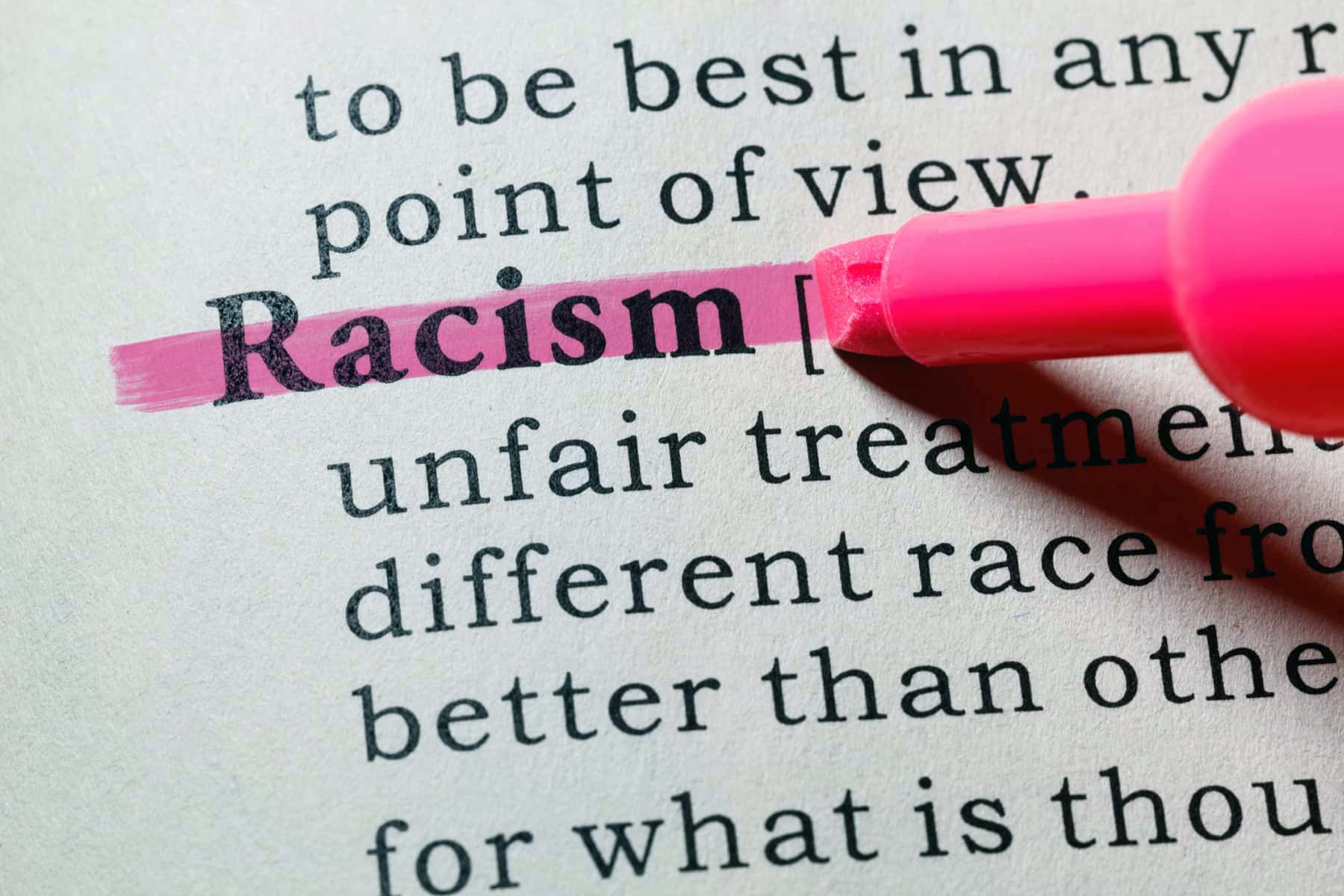
Reggie Jackson details the institution of racial discrimination that White Americans continue to ignore or support. This feature is part of a special series of articles that takes a closer look at the issue of Racism in the United States, understanding what Racism is and its social impact, along with exploring the conditions of Racism in Milwaukee’s culture. http://mkeind.com/systemicracism
“I would like the witnesses to tell us if they believe that the police department and the police in America are systemically racist. Would anybody like to raise their hand agreeing with that statement? And that means all 18,000 police departments, all 800,000 law enforcement officers? Is that true?” – John Cornyn, Texas Republican Senator
“I think some of the rhetoric that has been used in the wake of Mr. Floyd’s killing has been inaccurate and harmful. A great many of our colleagues, use the phrase ‘systemic racism’ to suggest that the entire criminal justice system is imbued with racism. I don’t believe that’s accurate.” – Ted Cruz, Texas Republican Senator
These are the words of people who don’t get it. All of the protests, all of the conversations, all of the teaching that’s taken place after George Floyd was murdered by police has been lost on people who say these things. In some cases — many probably — it’s not that they don’t get it, it’s that they don’t want to get it. They don’t want to believe the truth of our lived experiences. This may not be intentional. As people have been riveted to their television sets they have not always been able to hear the voices articulating what the concerns are. Instead they see images, videos, and hear sound bites, chants and “experts” telling them what they are seeing instead of the leaders of the protests being interviewed.
In all of the years that I’ve done training on racism I’ve encountered many white people who doubt that racism is anything more than individual acts of bigotry. This is what they’ve been taught. They’ve been taught to believe in the old trope that there are “a few bad apples.” This allows them to dismiss centuries of organized, deliberate, lawful racism in this country. People forget that within my lifetime — I was born in 1965 — that racism was mandated by the law (Jim Crow laws) in nearly twenty states. It was illegal under these laws to not discriminate against black people. They forget that politicians intentionally ran on pro-segregationist tickets all the way through the late 1960s. They forget that up until 1967 it was against the law for a person of color to marry a white person in dozens of states. They ignore study after study that shows racism is embedded in our criminal justice system. It’s easier to believe it’s all made up.
I’ve had multiple conversations with white friends and acquaintances over the past several weeks and many of them have told me about their white friends, family members, neighbors and co-workers that don’t believe systemic racism is real. They thinks it’s a hoax, that it is a tool to blame white society for the ills of communities of color. They think we live in a colorblind society and that real racism died in the 1960s.
I’ve read multiple quotes like the ones above from Senators Cruz and Cornyn denying that systemic racism is a real thing. White allies ask me what they can do to convince other whites that systemic racism is real. My response is generally the same. Those people — the deniers — don’t know American history very well or they simply want to maintain the status quo. They are either willfully ignorant or don’t know enough to have a decent conversation about systemic racism. They did not have the benefit of learning these ugly parts of American history in school because none of us did. For the most part it’s still not being taught.
I describe what systemic racism is in simple terms. You can see it like a black hole is seen by astronomers. Black holes are only visible by looking at nearby objects that get sucked into the void of a black hole. Systemic racism is similar. When you analyze the systems in America and the disparities for people of color it’s very easy to see. You look for the signs and you will see them.
When your race can predict your lived experiences in America that is what systemic racism is. When your race can predict on the day you are born as a black person that you will live a significantly shorter life than a white person that is systemic racism. When we can reliably predict the likelihood of a black boy going to prison when he is still only a toddler, that is systemic racism. When we can predict the much lower chance of you becoming a homeowner vs an equally creditworthy white person when you are black or brown, that is systemic racism.
As I have listened carefully over the past several weeks a theme has developed challenging what is clearly factual evidence that racism is as American as apple pie. Many have attempted to assert that any conversation that places American racism in the realm of a system is automatically erroneous. These claims are spreading like wildfire. This is part of the white backlash I wrote about recently. The first salvos have been fired in the counter-protests. We are being led to believe that the racism we see, and experience are figments of our imagination. Attempts to change the narrative are in full effect.
“Who are you going to believe? Me, or your lying eyes.” – Richard Pryor
Some white people have tried very hard to tell people of color, particularly black people, that what we see as systemic racism is imaginary. The evidence of systemic racism is interpreted differently by these deniers. When we see the same results, day after day, week after week, month after month, year after year, decade after decade and century after century, America’s systemic racism is as plain as day to people of color. We experience systemic racism.
However, there has always been and will always be a segment of white society that tries very hard to convince us that what we see is not racism. They have hired so-called “scholars” to write books convincing us that racism is a thing of the past. Their think tanks have funded racist diatribes that tell the world that black people have lower IQ’s than whites because we are an inferior version of humanity. The halls of academia, including the famed Ivy League schools have been front and center selling these lies over a long period of time. What became known as “scientific racism,” the science of justifying racism came from academics in the highest standing at Harvard, Yale, Princeton, Stanford, University of Wisconsin, University of Illinois Chicago, University of Michigan and other prestigious institutions of learning.
John Stuart Mill, the nineteenth-century philosopher wrote about the difficulty of telling uncomfortable truths.
“The real advantage which truth has, consists in this, that when an opinion is true, it may be extinguished once, twice, or many times, but in the course of ages there will generally be found persons to rediscover it, until some of its reappearances falls on a time when from favorable circumstances it escapes persecution until it has made such head as to withstand all subsequent attempts to suppress it.”
We appear to be in that time for many suddenly “woke” white people. They are discovering the truths spoken by people of color for centuries are actually real. White people are fighting the cognitive dissonance, learning the truth and unlearning the lies they’ve been taught. There will always be an abundance of those that some call racial skeptics, who refuse to believe the truth. These are the people trying so hard to undermine the conversations about systemic racism.They want to live inside the comfortable myth of America as a land where all have equal opportunity and “all lives matter.”
All lives have never mattered in America. They certainly don’t today either. We can say it out loud all we want, but all evidence tells us it is not true. Ask Native Americans if their lives have always mattered. Ask Latinx immigrants and Asian immigrants if their lived experiences are an example of their lives mattering. Black people would not be shouting black lives matter if America had shown us that black lives matter. When unarmed black people are murdered by police year after year and those police officers are not charged or are acquitted by the criminal justice system, we know our lives don’t matter. The system is shouting in our faces “your lives don’t matter!” Black lives matter to us, but how does white America feel about black lives? Up until recently most white people would not even say those words out loud. Did black lives all of a sudden start to matter now that George Floyd, Ahmaud Arbery and Breonna Taylor were murdered? Did it take another series of black martyrs for white people to wake up?
The fact that it has taken multiple black victims to wake up white America to our plight is a symptom of systemic racism. Professor Joe R. Feagin in his book Systemic Racism: A Theory of Oppression discusses what systemic racism is:
“This white-generated and white-maintained oppression is far more than a matter of individual bigotry, for it has been from the beginning a material, social, and ideological reality. For a long period now, white oppression of Americans of color has been systemic — that is, it has been manifested in all major societal institutions.”
The term systemic racism can easily be substituted with institutional racism, and structural racism. The mechanisms work the same because oppression generally has some basic ground rules. Oppression requires a group to be selected as unfit and underserving of being treated the same as the group doing the oppressing. Then some characteristic about them will be selected as the reasoning behind them being treated this way. This allows justification for them receiving the ill treatment. Ultimately the rationale is that they get what they deserve because they are flawed in the eyes of the oppressor.
One of the core tenets of oppression is violence. This violence against black people that the world is currently witnessing is a constant part of the lived experiences of black people in America. Hussein Bulhan in his book Frantz Fanon and the Psychology of Oppression tells us something about the history of violence against blacks in America.
“A society founded on the exploitation of slaves was the crudest form of structural violence. The use of white militia to search out runaway black slaves exemplifies undisguised institutional violence. The omnipresent whip not only symbolized authority, but also ritualized interpersonal violence. The countless Africans who flung themselves from ships into the Atlantic Ocean or who committed suicide on plantations also emphasize the desperation underlying interpersonal violence. Violence against blacks did not end with the abolition of slavery. In fact, the abolition of slavery renewed the efforts to ensure white supremacy…Urban race riots, Ku Klux Klan violence, and lynching became common means of terrorizing blacks and keeping them in ‘their place.’”
The long tentacles of this structural violence are still easy to see in the numerous cases of viral videos of the murders of Eric Garner, George Floyd, and many others by police and white “vigilantes.” Psychologist Frantz Fanon documented how this collective violence from oppressors begins to manifest itself in the oppressed. “The colonized man will manifest this aggressiveness which has been deposited in his bones against his own people…when the …policeman has the right…to strike the native, to insult and make him crawl to them, you will see the native reaching out for his knife at the slightest hostile or aggressive glance cast on him by another native: for the last resort of the native is to defend his personality vis-à-vis his brother.” When you see blacks victimizing other blacks this is a manifestation of the “aggressiveness which has been deposited” in our bones and psyches. We’ve been socialized for over 400 years to not value ourselves.
A system of oppression creates different mindsets in the oppressors and the oppressed. Bulhan describes it this way. “To the extent that the oppressor gains, to that extent does the oppressed lose. To the degree that the oppressor is jubilant, to that degree is the oppressed mournful. Inasmuch as the former is content, in the same intensity is the latter unhappy and enraged.” This explains the wildly varying degree to which people color, particularly blacks differ in their way of seeing this country as compared to most whites. Bulhan defines violence from a new paradigm.
“Violence is any relation, process, or condition by which an individual or a group violates the physical, social, and/or psychological integrity of another person or group.”
When we take an honest look at America from the perspective of people of color we see consistent violations of their bodies, minds and spaces. America has allowed violence against people of color to persist since the first settlers arrived. Violence has been sanctioned as legitimate when whites are the perpetrators and people of color are the victims. When people of color commit acts of violence and whites are the victims, that is considered the most illegitimate of violence in America. For centuries whites have been content watching black people killing each other, but alway draw a line in the sand when they kill white people.
Looking at how the death penalty is used gives us a clear sense of how this works. Since the death penalty was reinstated in 1976, 799 whites have been executed for killing other whites. Only 34 whites have been executed for killing blacks, 30 for killing Latinos, 8 for killing Asians, and just one for killing a Native American. In that time 187 blacks have been executed for killing a black person but 309 blacks have been executed for killing a white person. According to the Death Penalty Information Center “More than 75% of the murder victims in cases resulting in an execution were white, even though nationally only 50% of murder victims generally are white.”
Top down violence by the police is generally always accepted as legitimate violence. Violence from the bottom up is illegitimate. Bulhan defines legitimate violence as “the socially sanctioned use or threat of harm as in police action and war.” Illegitimate violence on the other hand is “that which goes against laws and the accepted norms of society.” Legitimacy according to Bulhan is based on “where one happens to be situated in the social order and depending who has the authority — indeed ability to effect violence — to impose it on others.” The fly in the ointment here, is that laws and norms of society are often at odds. When thousands of whites participated in lynch mobs for decades it was certainly against the law, but sanctioned by the norms of white society at the time.
Shirley Better discussed the findings of the 1968 Kerner Commission (Commission of Civil Disorders) report which studied dozens of outbreaks of revolt across the country due to ongoing racism. The report concluded that “Our nation is moving toward two societies, one black, one white — separate and unequal.” Better argues:
“This was untrue then and remains untrue and tends to support the historical facade surrounding racism. The operative word ‘moving’ is false. We have always been two nations, one white, one of varied hues, one rich, one poor — separate and unequal.”
Better in her book, Institutional Racism: A Primer on Theory and Strategies for Social Change, defines institutional racism in America as “those patterns, procedures, practices, and policies that operate within social institutions so as to consistently penalize, disadvantage, and exploit individuals who are members of nonwhite racial/ethnic groups. Institutional racism functions to reinforce white skin privilege in all facets of American life.”
Why does racism of this type endure? Better says, “there is profit and gain accrued by all in the dominant group through the maintenance of racism. The positive uses of racism are (1) economic privilege, (2) social privilege, (3) psychic reward.” Racism in America has always provided benefits for white people. Those who cry that systemic racism does not exist are often the greatest recipients of the positive benefits of that racism.
When the federal government was making homeownership available during the 1930s and beyond, whites were clearly the winners. Blacks and other people of color were shut out by policies such as redlining and the use of racially restrictive covenants which legally created all-white communities across the nation. When the GI Bill was dispensing billions in home loans and free higher education funds most black GI’s were shut out of access to the program. 19 states maintained separate colleges and universities for black and white students. In my home state of Mississippi in 1947, 3,229 veterans received guaranteed home loans through the GI Bill. Only two of them were black.
The building of middle class white communities that came out of these policies and practices have been revisioned by whites as the product of their superior culture and “Protestant work ethic” instead of as government handouts or what Ira Katznelson calls “affirmative action for whites.” Federal government funding built the suburbs for white people, provided the electrical grid, the sewage systems, the roads, loans for whites to purchase these brand new homes and designed and created the national freeway system to make it easy for whites to “escape” the central cities around the country. White GIs’ were able to go to the “historically white colleges and universities” and gain degrees for free, accelerating them into the middle class and above while GI’s of color were denied this pathway to the American dream. Banks loaned white people money for first and second mortgages and denied them to people of color. In 1950 in Milwaukee 27,227 whites had active traditional bank issued mortgages in the city and only 369 nonwhites did. There were 5,076 FHA mortgages and 3,028 VA mortgages, all of them were given to whites.
As people take it upon themselves to learn more about America’s systemic mistreatment of people of color I think something equally as important must accompany that learning. They must simultaneous unlearn all of the negative things they learned about people of color and also unlearn the myth of meritocracy. Whites have been taught that this is a nation that rewards merit. It does not. Whites have been given things that people of color have deserved for centuries and not blinked an eye, knowing they were not earned. When my family members worked 18 hour days on a plantation for a white man named Dempsy Diltz in Mississippi up until 1865, they did not receive any rewards for their hard work. All of the rewards went to Diltz and his family. The fruits of my ancestors labor and millions of more black people were enjoyed by white families like the Diltz’s all over the country. These white people did not earn the wealth they accrued. They did not attempt, or contemplate sharing the wealth with black people they held in bondage.
Even those whites who were not slaveholders benefitted, first by not being black and eligible t be enslaved, and secondly by participating in the businesses which supported slavery and those that were directly supported by slavery. Wall Street firms invested in slaving, Rhode Island shipbuilders built most American slaving ships, large insurance companies made a fortune ensuring black bodies and slaving ships, the merchants of New England processed the goods and commodities of slave labor in their factories, the states and then eventually federal government taxed the sale of each black person arriving into this country. White people were the brokers in slave markets selling black men, women and children. White people often claim their family “never owned slaves” or that their families “arrived in this country after slavery was abolished.” Europe and the United States were partners in enslaving tens of millions of African people. If your ancestors came over from Europe they were as much a part of slavery in their old countries as you were living here because those nations were enriched by the free labor of black people. Europe benefitted and became prosperous off of the backs of black people. Even if every European did not directly participate their standard of living was lifted by those nations participation in the slave trade.
When we debate the existence of systemic racism let’s be mindful that the system which has kept a foot (or knee) on the necks of people of color allowed whites to live free of that type of sustained violence. The lived experiences of most whites don’t include being victimized because of their race. They don’t see police brutality by officer Bob because they see him as their neighbor, bowling buddy, softball coach, favorite uncle, proud son, and all-American boy protecting them from the “bad guys.”
“Whereas disregard and contempt for human rights have resulted in barbarous acts which have outraged the conscience of mankind, and the advent of a world in which human beings shall enjoy freedom of speech and belief and freedom from fear and want has been proclaimed as the highest aspiration of the common people…Everyone has the right to life, liberty and security of person…No one shall be subjected to torture or to cruel, inhuman or degrading treatment or punishment…” – United Nations Universal Declaration of Human Rights, December 10, 1948
- Systemic Racism 101: Dear America, I can’t believe what you say because I see what you do
- Systemic Racism 201: The advantages Whites have felt entitled to for generations
- Systemic Racism 301: Denying that Systematic Racism is real does not change the truth of its existence
- Systemic Racism 401: The Myth of American Meritocracy














